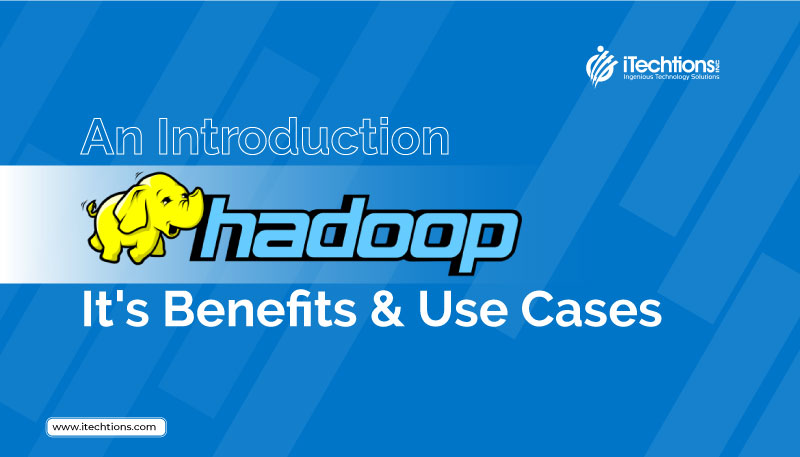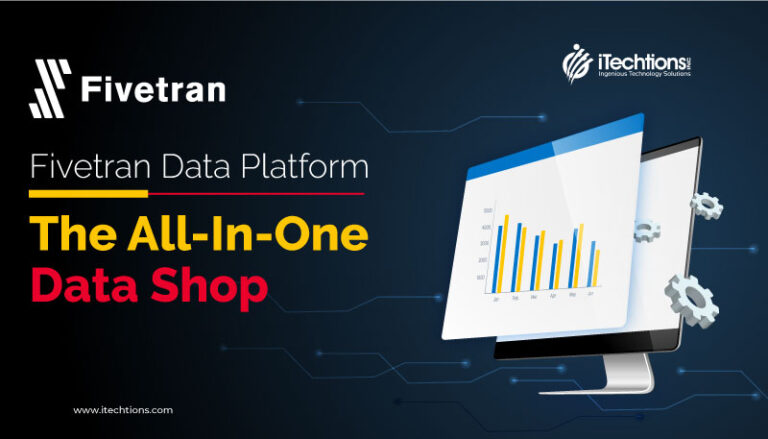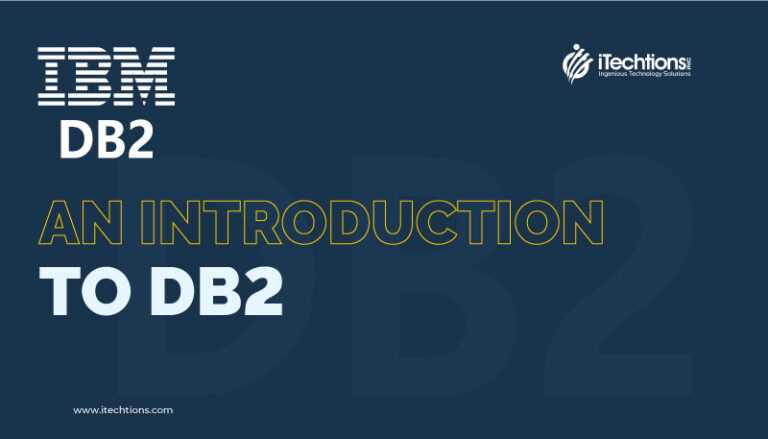Introduction
Hadoop has revolutionized big data processing and analytics by providing an open-source software framework that is specifically designed for storing and processing large amounts of data in a distributed computing environment. Through its use of the MapReduce programming model, Hadoop enables parallel processing of extensive datasets, allowing for faster and more efficient data analysis.
Due to its versatility and scalability, Hadoop finds wide application in various big data scenarios, including data warehousing, business intelligence, machine learning, data processing, analysis, and mining. By allowing distributed processing of large datasets across clusters of computers, Hadoop offers a simple programming model that can cater to the diverse needs of different industries and domains. Whether it’s uncovering insights from massive amounts of customer data or training machine learning models on vast datasets, Hadoop provides the necessary infrastructure and tools to handle the challenges of big data processing and analytics.
In the following sections, we will explore the different components of Hadoop in further detail and highlight examples of how organizations have leveraged this revolutionary technology to gain valuable insights from their big data. Stay tuned for an in-depth exploration of Hadoop’s capabilities and its impact on the world of big data processing and analytics.
Benefits of Hadoop
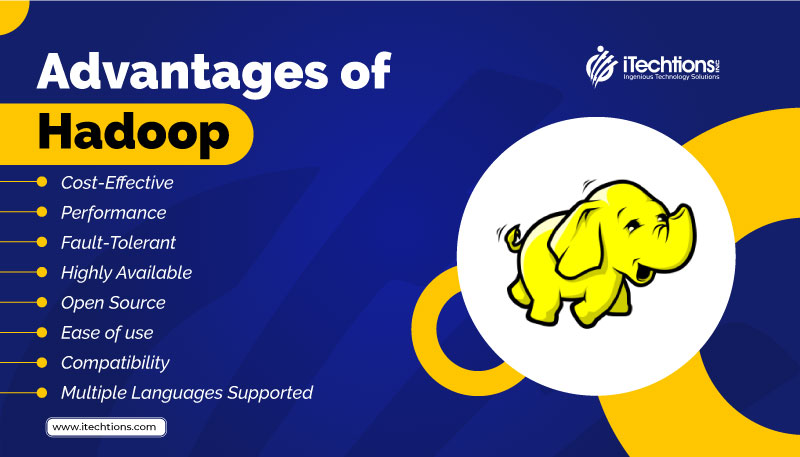
One of the most significant advantages of Hadoop is its democratizing effect on computing power. In the past, processing and analyzing large datasets required expensive and specialized hardware. However, Hadoop’s distributed computing capabilities enable organizations to leverage clusters of commodity hardware to achieve the same level of processing power at a fraction of the cost.
Hadoop’s main components, HDFS and YARN, play integral roles in its ability to handle big data. HDFS, the storage component, allows for the storage of large datasets across multiple machines. Its cost-effectiveness is a notable feature, as it works seamlessly with commodity hardware. On the other hand, YARN serves as the resource management component, responsible for allocating resources such as CPU and memory for processing the data stored in HDFS.
Another advantage of Hadoop is the availability of additional modules such as Hive, Pig, and HBase. These modules provide added functionality, including SQL-like queries, high-level program creation, and non-relational distributed databases. These tools enhance the capabilities of Hadoop and enable users to perform more complex data processing and analytics tasks.
Another major benefit of Hadoop is the flexibility it provides in managing and analyzing data. Unlike traditional data warehouses that require data to be structured before storage, Hadoop can handle both structured and unstructured data. This flexibility allows organizations to easily adapt to changing data requirements and integrate various data sources without the need for extensive data transformation.
The ability to process and analyze different types of data, such as text, images, and videos, opens up opportunities for organizations to derive insights from a wide variety of sources. This flexibility in data management enables businesses to discover new patterns, trends, and correlations that can lead to valuable insights and better decision-making.
Furthermore, Hadoop’s lower costs compared to traditional data warehouses make it an attractive choice for organizations looking to store and process large volumes of data. As an open-source technology, Hadoop eliminates the need for expensive proprietary hardware and licenses. Instead, it utilizes commodity hardware, which is significantly more affordable. This cost-effectiveness is particularly important for organizations with limited budgets or those dealing with rapidly growing data volumes.
In addition to cost savings, Hadoop’s lower infrastructure requirements also contribute to its benefits. The ability to run on commodity hardware means that businesses can easily scale their Hadoop clusters without incurring significant costs. This scalability enables organizations to adapt to changing data needs, ensuring that their data processing capabilities can keep up with the growing demands of modern environments.
The fault tolerance of Hadoop is another key benefit that sets it apart from traditional data processing systems. By storing data in a distributed manner across multiple nodes, Hadoop ensures that data is replicated and readily available in case of failures. This fault tolerance minimizes the risk of data loss and ensures that data processing can continue uninterrupted even in the event of hardware or network failures.
Overall, the benefits of Hadoop are significant and have revolutionized big data processing and analytics. Its increased computing power and fault tolerance, flexibility in data management, and lower costs compared to traditional data warehouses make it an ideal choice for organizations looking to effectively store, process, and analyze large volumes of data. As the demand for
data-driven insights continues to grow, Hadoop is likely to play an even more crucial role in enabling businesses to unlock the full potential of their data.
Use Cases of Hadoop
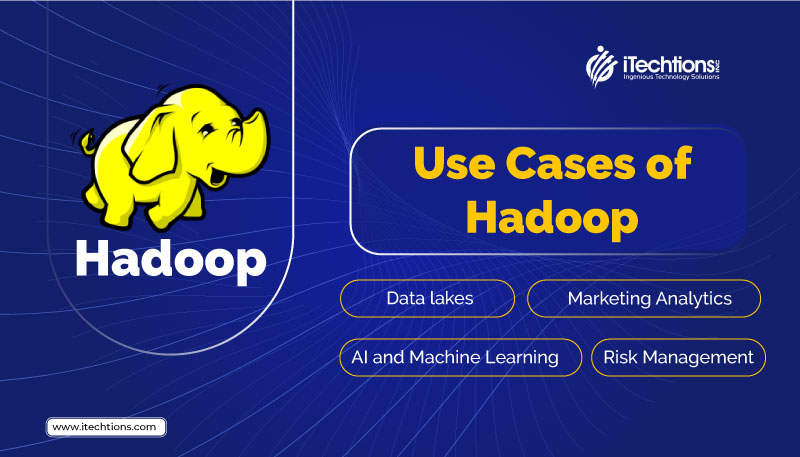
Data lakes
One of the key use cases of Hadoop is its integration with data lakes. Hadoop complements data lakes by providing a robust and scalable framework for storing unrefined data. Traditional data warehouses often struggle with the large volumes and variety of data that organizations generate. Hadoop’s distributed file system, HDFS, allows companies to store all types of data, regardless of their structure or format. This means that companies can store raw, unrefined data in its original form within their data lakes. By doing so, companies can maintain a centralized repository of all their data, enabling them to perform more comprehensive analysis and derive valuable insights from the unstructured and untapped information.
Marketing analytics
For companies that heavily rely on customer relationship management (CRM) systems, Hadoop plays a vital role in storing and analyzing CRM data. Marketing analytics requires the processing of vast amounts of customer data, including transaction history, interactions, and demographic information. With Hadoop, companies can store and process this data efficiently and
cost-effectively. The distributed processing capabilities of Hadoop allow for parallel computation, making it possible to analyze large datasets quickly. By leveraging Hadoop, companies can gain deeper insights into customer behavior, segment their customer base, and develop targeted marketing campaigns to improve customer engagement and loyalty.
Risk management
Hadoop has found widespread use in the banking and financial services industry, primarily for risk analysis. Financial institutions deal with enormous amounts of data daily, including transaction records, market data, and customer information. Hadoop’s ability to handle large datasets and perform parallel processing allows banks and financial organizations to analyze this data quickly. By using Hadoop, financial institutions can identify patterns, detect anomalies, and assess risks in real-time. This empowers them to make informed decisions, minimize financial risks, and ensure regulatory compliance. Additionally, the scalability and fault tolerance features of Hadoop provide a reliable and efficient solution for managing and processing vast amounts of financial data.
AI and machine learning
The increasing adoption of artificial intelligence (AI) and machine learning (ML) applications has led to a growing need for scalable and reliable data processing platforms. Hadoop, together with its ecosystem components, including Apache Spark and Apache Flink, has become the go-to solution for AI and machine learning tasks. Hadoop’s distributed nature allows for the processing of massive volumes of data, ensuring that ML algorithms have access to the necessary data points for training and inference. Additionally, Hadoop’s data redundancy and
fault tolerance features contribute to the reliability and stability required for training complex ML models. By leveraging Hadoop ecosystems, organizations can streamline their AI and ML workflows, improving the accuracy and performance of predictive and analytical models.
In conclusion, Hadoop has revolutionized big data processing and analytics across various industries. Its integration with data lakes, application in marketing analytics, risk management, AI and machine learning, and specific use cases in retail and finance exemplify its versatility and power. By leveraging Hadoop, organizations can unlock the potential of their big data and use it to gain valuable insights, make data-driven decisions, and gain a competitive advantage in the rapidly evolving digital landscape.
Hadoop and Cloud Computing
The availability of prepackaged cloud services for running Hadoop clusters has greatly enhanced the adoption and usability of Hadoop for big data processing and analytics. Cloud providers like Amazon Web Services (AWS), Google Cloud, and Microsoft Azure offer ready-to-use Hadoop frameworks that can be easily deployed, eliminating the need for organizations to set up and manage their own infrastructure.
One of the major benefits of using cloud resources for Hadoop is the flexibility it provides. With the ability to scale resources up or down on-demand, organizations can easily handle fluctuating workloads without the need for upfront investments in hardware. This elasticity enables efficient resource allocation, ensuring that compute and storage resources match the needs of the workload. Cloud platforms also offer robust monitoring and management tools, allowing administrators to closely monitor resource usage and optimize performance.
In addition to flexibility, cloud computing can help organizations exercise greater control over costs when using Hadoop. With the pay-per-use pricing model, organizations only pay for the resources they consume, making it a cost-effective solution for businesses of all sizes. Cloud platforms offer various pricing options, such as reserved or spot instances, enabling organizations to choose the most suitable pricing model based on their specific requirements. This cost control allows organizations to effectively manage their budget while benefiting from the power of Hadoop.
A notable example of a cloud service for Hadoop is Google Cloud’s Dataproc. Dataproc offers a fully-managed service for Hadoop, allowing organizations to quickly and easily set up and manage Hadoop clusters. With Dataproc, users can take advantage of the scalability and reliability of Google Cloud’s infrastructure to process large datasets in a distributed manner. It seamlessly integrates with other Google Cloud services, enabling organizations to leverage a wide range of tools for data processing, analytics, and machine learning.
In conclusion, the combination of Hadoop and cloud computing has revolutionized big data processing and analytics. The availability of prepackaged cloud services for running Hadoop
clusters offers organizations a scalable and flexible solution for efficiently processing and analyzing large datasets. The benefits of using cloud resources for Hadoop, such as flexibility and cost control, allow organizations to effectively manage their resources and budgets while harnessing the power of Hadoop. Services like Google Cloud’s Dataproc further enhance the usability of Hadoop, providing a fully-managed solution with seamless integration into a comprehensive cloud ecosystem. With Hadoop and cloud computing, organizations can unlock valuable insights from their big data and drive innovation in their respective industries.
Future Developments in Big Data Analytics
Mention of Apache Spark as a development enabled by Hadoop
One of the significant developments enabled by Hadoop is the emergence of Apache Spark. Spark is an open-source, distributed computing system that builds upon the capabilities of Hadoop. While Hadoop focuses on batch processing of data, Spark provides a faster and more versatile framework for big data analytics. It enables real-time data streaming, interactive analysis, and machine learning capabilities, expanding the scope and possibilities of big data processing. With its in-memory computing capabilities and ability to handle multiple data types, Spark has become a preferred choice for large-scale data analytics projects.
The continuous growth and potential of big data analytics
The field of big data analytics continues to grow and evolve, fueled by advancements in technology and the increasing availability of data. Organizations are recognizing the value and competitive advantage that can be gained through effective data analysis. As more industries acknowledge the potential of big data, the demand for sophisticated analytics tools and platforms is skyrocketing.
In the future, big data analytics is expected to become even more efficient, thanks to advancements in hardware, software, and algorithms. Improved processing power and storage capabilities will allow for even larger data sets to be analyzed, enabling more accurate insights and predictions. The integration of artificial intelligence and machine learning techniques will further enhance the capabilities of big data analytics, enabling automated pattern recognition and decision-making at scale.
Furthermore, the rise of edge computing and the Internet of Things (IoT) will generate vast amounts of data from various sources, further driving the need for advanced analytics techniques. Real-time analytics will become essential for organizations to gain immediate insights from streaming data and make informed decisions on the fly.
The continuous growth and potential of big data analytics also bring challenges and opportunities in terms of data privacy and security. As more data is collected and analyzed, organizations need to ensure secure and ethical practices to protect sensitive information.
In conclusion, Hadoop has played a pivotal role in revolutionizing big data processing and analytics. It paved the way for future developments like Apache Spark, which provided faster and more versatile capabilities for data analysis. The continuous growth and potential of big data analytics promise even more exciting advancements in the coming years, enabling organizations to extract more value from their data and make data-driven decisions with greater confidence. As technology continues to evolve, big data analytics will continue to shape the way we understand and utilize data in various industries.
Final Thoughts
Hadoop has transformed the world of big data processing and analytics, providing organizations with a powerful and cost-effective solution for storing, processing, and analyzing large volumes of data. Its distributed computing capabilities, coupled with its fault tolerance and scalability, make it an ideal choice for handling the challenges of big data.
Through its integration with data lakes, Hadoop enables organizations to store and analyze unrefined data, unlocking valuable insights from previously untapped information. In marketing analytics, Hadoop empowers companies to gain deeper customer insights and develop targeted marketing campaigns. In the finance industry, Hadoop’s ability to handle vast amounts of data allows for real-time risk analysis and fraud detection.
Hadoop’s flexibility in managing structured and unstructured data, combined with its lower costs compared to traditional data warehouses, make it a versatile and cost-effective solution for businesses. Its integration with cloud computing further enhances its usability, providing scalable and flexible resources for big data processing and analytics.
As the field of big data analytics continues to evolve, Hadoop’s impact will only continue to grow. The development of Apache Spark and the continuous advancements in hardware and algorithms promise even greater efficiency and capabilities in big data processing. With the rise of edge computing and the Internet of Things, the need for real-time analytics and the ability to analyze vast amounts of data will become even more essential.
In conclusion, Hadoop has revolutionized big data processing and analytics, enabling organizations to unlock the full potential of their data. As technology continues to advance, big data analytics will continue to shape the way businesses understand and utilize data, driving innovation and informed decision-making across industries.


